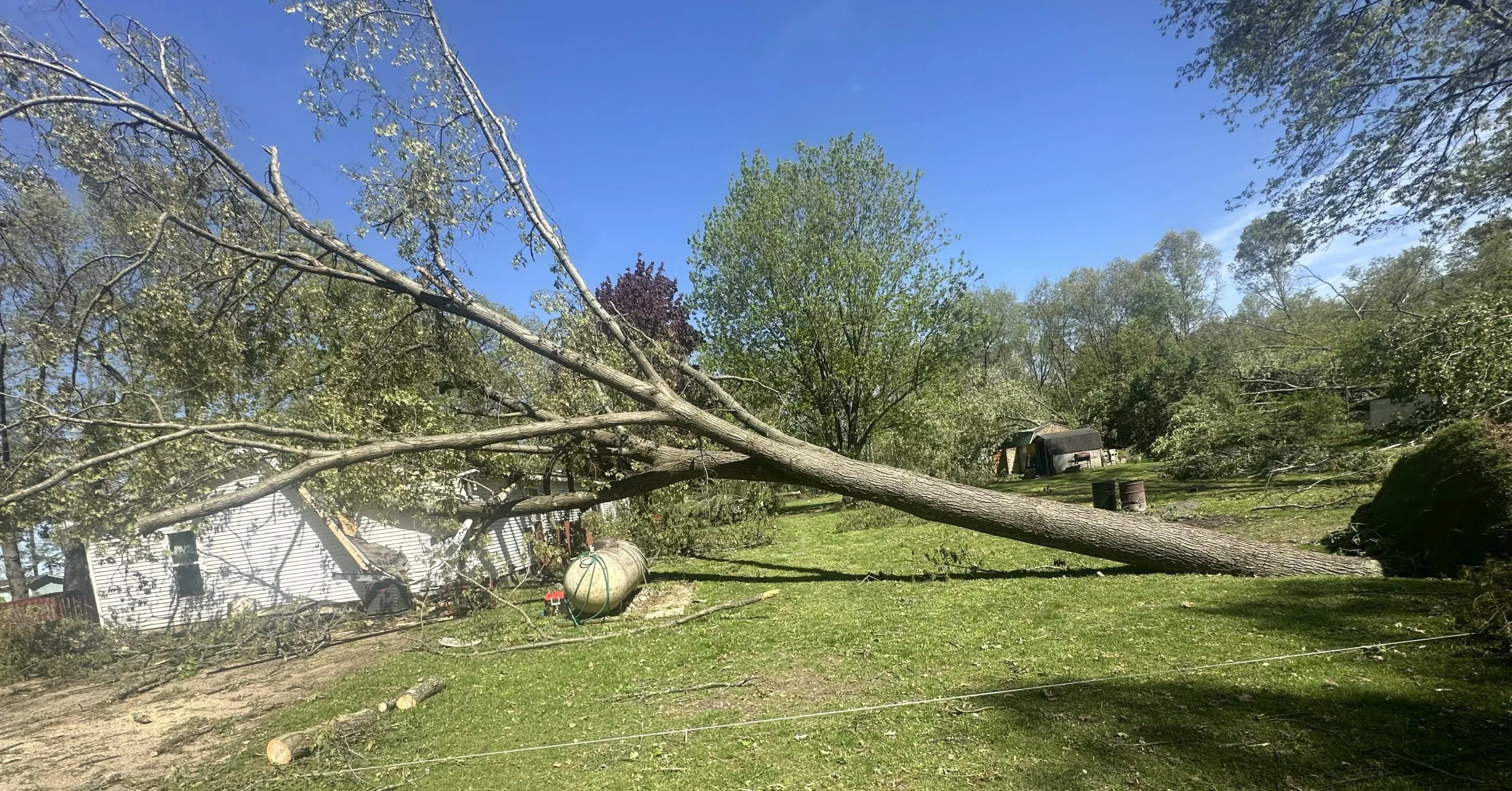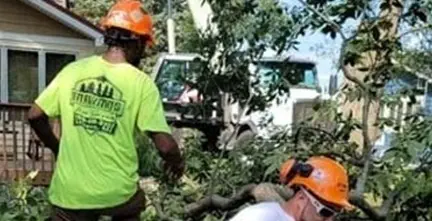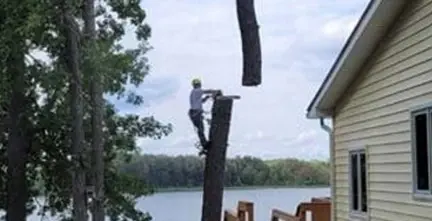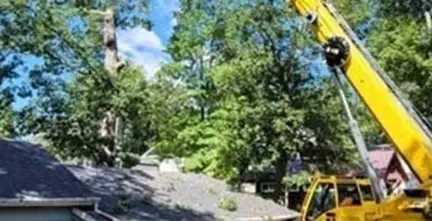When a tree falls on a power line, it is more than an inconvenience, it is a dangerous, sometimes deadly, emergency. Fixing it yourself could bring far greater risks to you and your neighbors. Fallen power lines can cause electric shock, trigger fires, or result in costly and prolonged outages.
What should you do first? Who should you call? How can you avoid the mistakes that make problems worse?
A fallen tree on a power line occurs when part or all of a tree drops onto an overhead electrical wire, knocking out power or creating a dangerous environment. These wires are almost always live, carrying high-voltage electricity to homes, businesses, and neighbors. Even touching the ground near them can result in electrocution.
The Risks of Ignoring a Fallen Tree on a Line
You cannot put this task off. Here is why:
- Safety risks: Electricity can travel through the tree, the ground, or even standing water. Pets, kids, and anyone who steps too close are at risk.
- Financial consequences: Handling it poorly leads to longer outages, food loss, interrupted work, or even fire damage.
- Emotional stress: Living with a tree on a line near your home makes sleeping or leaving your house nerve-wracking.
- Seasonal hazards: Storms, heavy snow, or strong winds can bring branches down without warning.
Common Mistakes People Make
- Trying to move or cut the tree themselves: If the line is live, you could be electrocuted instantly.
- Getting too close: Electricity can jump. Being near a downed line or wet ground puts you at risk.
- Ignoring the problem: Assuming “it is not sparking, so it must be safe” is dangerous.
- Assuming insurance covers everything: Utility companies typically handle their lines, not your insurer.
- Expecting instant removal: Power companies focus first on safety and stabilizing lines, not on tree debris.
What to do instead: Stay back, notify the utility, and wait for clearance before calling tree professionals.
Step-by-Step Guide
1. Stay Away and Warn Others
Keep everyone, including pets, at least 30 feet (10 meters) away. If you can, mark off the area from a safe distance.
2. Call Your Electric Utility
Report the downed tree on their 24/7 emergency line. Utilities have dedicated crews for dangerous line incidents.
3. Call 911 for Injury or Fire
If you see sparks, smoke, or someone is injured, call emergency services right away.
4. Document Safely from Afar
Take photos or videos for insurance, but stay well back from the hazard.
5. Wait for Utility Clearance
Let the professionals stabilize the lines and confirm that power is off.
6. Contact a Professional Tree Service
Once the utility gives the all-clear, call a licensed, insured tree company experienced with storm emergencies.
Pro Tip: Leaving fallen trees near power lines unattended, even for a few hours, can dramatically increase risk. Always call the utility first, then a tree professional. Do not reverse the order.
DIY vs. Call a Pro
You are safe handling things yourself only if:
- The tree fell far from any power lines or equipment
- The tree is small and poses no risk
- You have tree care experience and proper gear
With power lines involved:
- It is illegal and unsafe for untrained people to touch or move the hazard
- Only professionals with utility approval and safety equipment should handle removal
It is safest to call the experts.
Cost Factors and Risk Variables
| Factor | Risk Level | Impact on Cost/Time |
| Urgency (live wires) | High | Emergency rates, fast dispatch |
| Tree size and location | Medium to High | Bigger job, more equipment |
| Weather conditions | Variable | Can slow or complicate response |
| Accessibility | Medium | Tight spaces increase risk |
| Extent of electrical damage | High | Needs extra coordination |
Rushing is not safer. Waiting for professional clearance often prevents bigger costs.
What Should You Do If a Tree Falls on a Power Line?
Stay at least 30 feet away. Keep everyone out of the area. Call your electric utility emergency number immediately. If there is sparking, fire, or injury, call 911. Do not touch anything, even if the wires appear “dead.” Wait for the utility crew to give you the go-ahead before calling a professional for tree removal.
FAQs
Who is responsible if a tree falls on power lines?
The utility company is responsible for repairing their lines. Tree removal starts only after they declare the area safe.
Can I remove a tree touching a power line?
Never. Only licensed tree crews with utility clearance can safely do this work.
How far should you stay from a downed power line?
Minimum distance is 30 feet. Keep kids and animals away.
Is a downed line safe if it is not sparking?
No. Assume every wire is live, even if there are no visible sparks.
What should you do first?
Immediately call your utility company emergency number and keep clear of the area.
How long do repairs take?
It depends on severity and weather. Utilities usually work as quickly and safely as possible.
What if the power outage lasts days?
Contact your utility for updates. Never try to reconnect or repair lines yourself.
Is my homeowner’s insurance liable for this damage?
Utilities cover line repairs. Your insurance may cover property damage, but not the lines themselves.
How can I prevent this in the future?
Have trees near lines inspected and trimmed by certified professionals. Schedule routine maintenance.
For more tips, see our Tree Maintenance Guide.
What to Do Next
If you spot a fallen tree on a power line, do not wait. Notify your electric utility immediately. When the area is cleared, contact Brawner’s Tree Service for safe, reliable tree removal and cleanup, day or night.
Your safety and peace of mind come first. Always put caution before action when trees and power lines meet.




